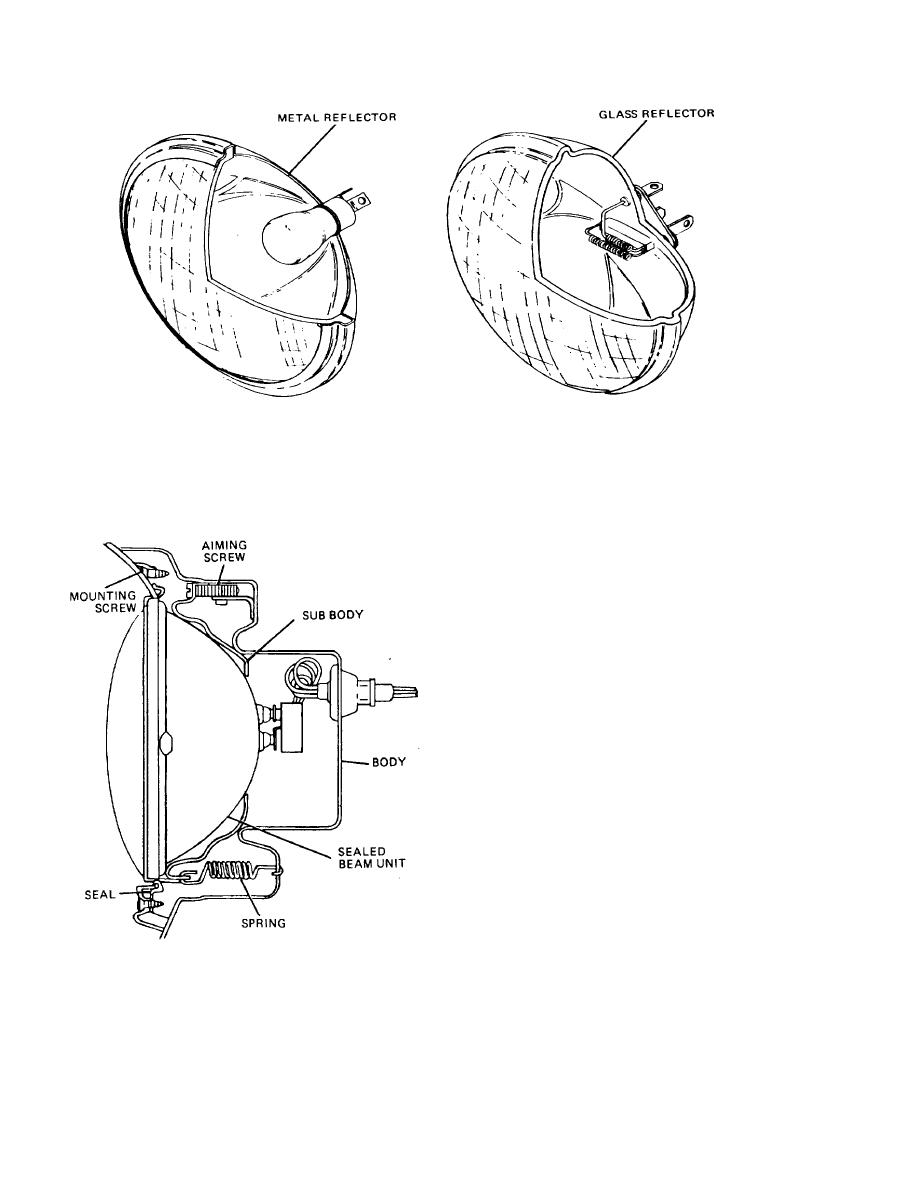
| Tweet |

Custom Search
|
|

|
||
 TM 9-8000
Figure 16-5. Automotive Headlamp Configurations
candlepower lamp is sufficient with a narrow, high-
these requirements. With the increased use of high-
intensity beam, but with the general floodlighting effect
powered lamps have come laws enforcing the proper
desired today, a larger light source is necessary. The
focusing of the lights and the use of dual-beam
sealed-beam headlamp has been developed to meet
headlamps. The dual-beam headlamp is designed so
that one filament will be at the focal point of the reflector,
and the other filament will be out of focus slightly so that
the rays will be turned downward. Depressing the beam
is accomplished by a switch that changes the current
from one filament to the other.
16-6.
Elimination of Glare.
a. Cause of Glare. Any light source is said to
produce glare if it reduces the clarity of vision of anyone
looking toward it. Practically speaking, the blinding or
dazzling effect of light is not due to the brilliancy of the
light but to the lack of illumination in the immediate
vicinity through which the rays are projected. The
headlight, for example, that produces glare on a dark
road at night would not produce glare on a well-lighted
street, and in the day tirne with the sun shining, it would
hardly be noticed. If the strong light rays can be kept
below the eye level, the nuisance of glare will be
eliminated.
b. Elimination. Many tests have been conducted by
the Society of Automotive Engineers and by
manufacturers to eliminate headlight glare as much as
possible and still have enough light for safe driving. Two
beams are specified to meet these requirements:
Figure 16-6. Sealed-Beam Headlamp
Construction.
TA233611
16-6
|
||
 |
||